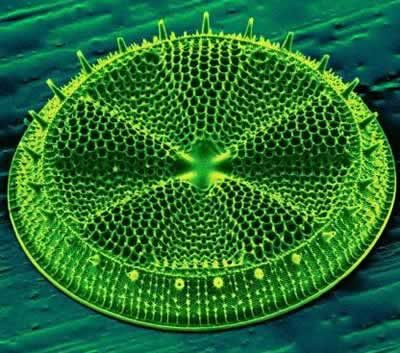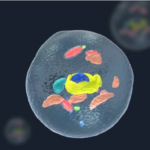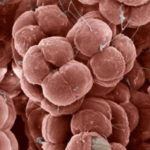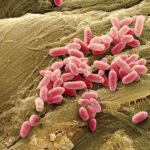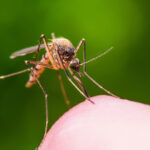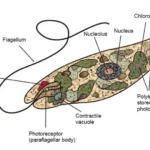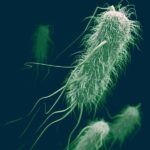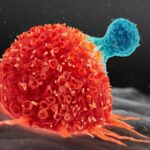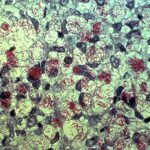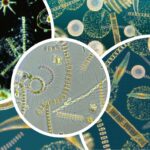Plankton, a general term given to organisms that can only move through currents in the water and are generally not very mobile otherwise. Diatoms, also known as diatomaceous algae, are a type of eukaryotic algae that make up a portion of phytoplankton in aquatic environments. These tiny organisms are integral to many natural processes around us. Let’s take a closer look at diatoms.
Diatoms are single-celled microalgae with a wide variety of shapes. They are neither strictly plants nor animals but can exhibit characteristics of both. They can perform photosynthesis like plants and possess chloroplast structures typical of plants, yet they also have genes associated with animals. This is because diatoms evolved during a period when the distinction between plants and animals was not clear-cut, diverging from a common ancestor to become the unique organisms they are today.
Due to their hard, silica-based shells, these organisms accumulate over millions of years, forming layers that serve as a kind of “history book” for paleontologists. This accumulation provides detailed information about events and environments from different periods.
Today, architects predominantly use glass to construct skyscrapers and unique homes. However, diatoms were using glass for their homes millions of years ago! These organisms, living in glass houses, have cell walls made of transparent, opaline silica. With intricately patterned silica walls, these single-celled organisms derive their name from the Greek words “diá” meaning “through” and “témnein” meaning “to cut.” Diatoms can thrive in various aquatic environments, including moist areas or soil. They obtain their nutrients from various morphogenetic regions such as rocks, rivers, glaciers, and deserts.
Processes like rain erosion on rock surfaces, carrying silica sediments via rivers into bodies of water like straits, lakes, seas, and oceans, or atmospheric circulations displacing desert sands, contribute to the availability of nutrients in the water where diatoms live, creating favorable geographical conditions. Diatoms utilize the ground silica from these eroded rocks or the leftover silica from deceased diatom bodies to create new cell walls, facilitating rapid reproduction. Their population quickly multiplies, leading to a phenomenon where the refraction of light in oceans and seas changes, resulting in a captivating turquoise hue.
This frenzy of feeding and population explosion occurs rapidly. When nutrients become depleted, reproduction halts, and many diatoms begin to die. Their bodies slowly sink to the seabed, forming a thick layer. The Sahara Desert in Africa, once an ancient sea, bears witness to this, with its floor composed of sedimentary layers formed by the remains of deceased diatoms. Atmospheric circulations carry these diatom-laden dust particles, along with African sands, across various regions of the Earth, even reaching as far as the Amazon rainforest. This mixture of dead diatom bodies and dust plays a significant role in the growth of plants in the Amazon basin.
Geography and Natural Events
Since the dawn of humanity, people have been living intertwined with geography, consciously or unconsciously engaging in geographical inquiries. Geography, as a science, endeavors to assist individuals in understanding their surroundings and the relationships between objects through systematic methods, fueled by natural curiosity. In educational institutions, the primary aim of geography is to instill this questioning technique in students. Geography, particularly by establishing spatial cause-and-effect relationships of natural events, offers a perspective that enables individuals to comprehend the indispensability and worthiness of our planet for us.
Occasionally, we witness firsthand various geographical formations in the cities we inhabit. You must have heard news like “Dust fell from the sky, covering the vehicles with mud.” Some of us immediately worry about cleaning the vehicles without questioning the reason behind the layer of dust on them. And yet, as we will explore further, some prefer to admire the scenery without delving into why the Istanbul Strait changes its color. The readers of this article, however, while seeking answers to geographical questions such as where the dust covering the vehicles came from and what it contains, also ponder why the strait has turned turquoise and what might be the cause behind it. So, you are in the right place.
Diatoms Produce Approximately 50% of the Oxygen We Breathe!
These organisms, with their diverse and intricate geometric shapes, also produce the oxygen that is essential for our lives.
The impact of climate on diatoms is complex. While performing photosynthesis, diatoms breathe in carbon dioxide from the atmosphere and exhale oxygen. This activity alters the chemistry of the atmosphere, influencing the climate on a global scale. Through photosynthesis, diatoms produce nutrients and oxygen with the help of carbon dioxide, sunlight, water, and chlorophyll. They convert carbon dioxide (CO2) into organic carbon in the form of sugars, releasing oxygen (O2) into the environment. While forests provide approximately 30% of the oxygen on our planet, we owe about 50% of the oxygen we breathe to the oxygen released by diatoms.
Despite being as small as a human hair, some of these tiny organisms play a crucial role in sustaining larger and more diverse life forms, although most of them require the use of light or electron microscopes to be seen. Their ability to rapidly reproduce and persist in vast oceans is attributed to their formation of massive groups.
Diatoms transform into a rich source of energy in the form of long-chain fatty acids they produce internally, becoming an important food source for all organisms, from zooplankton in oceans, lakes, and rivers to water insects, fish, and whales. Diatoms, which are still being discovered as new species every year, also provide information about the quality and health of the water they inhabit, as they can thrive in environments with balanced pH and salinity. This underscores the vital importance of assessing and monitoring the biotic condition of water bodies.
